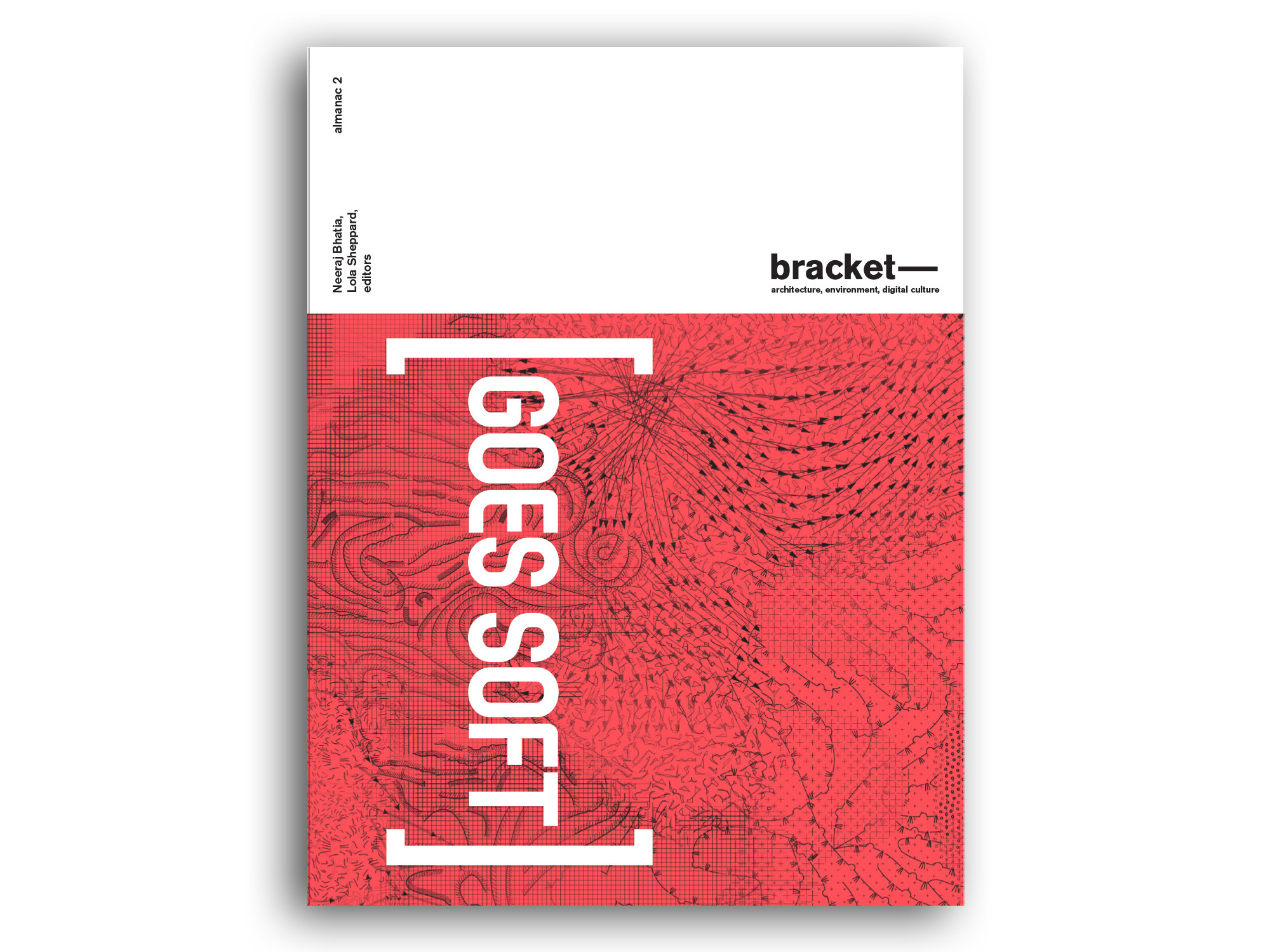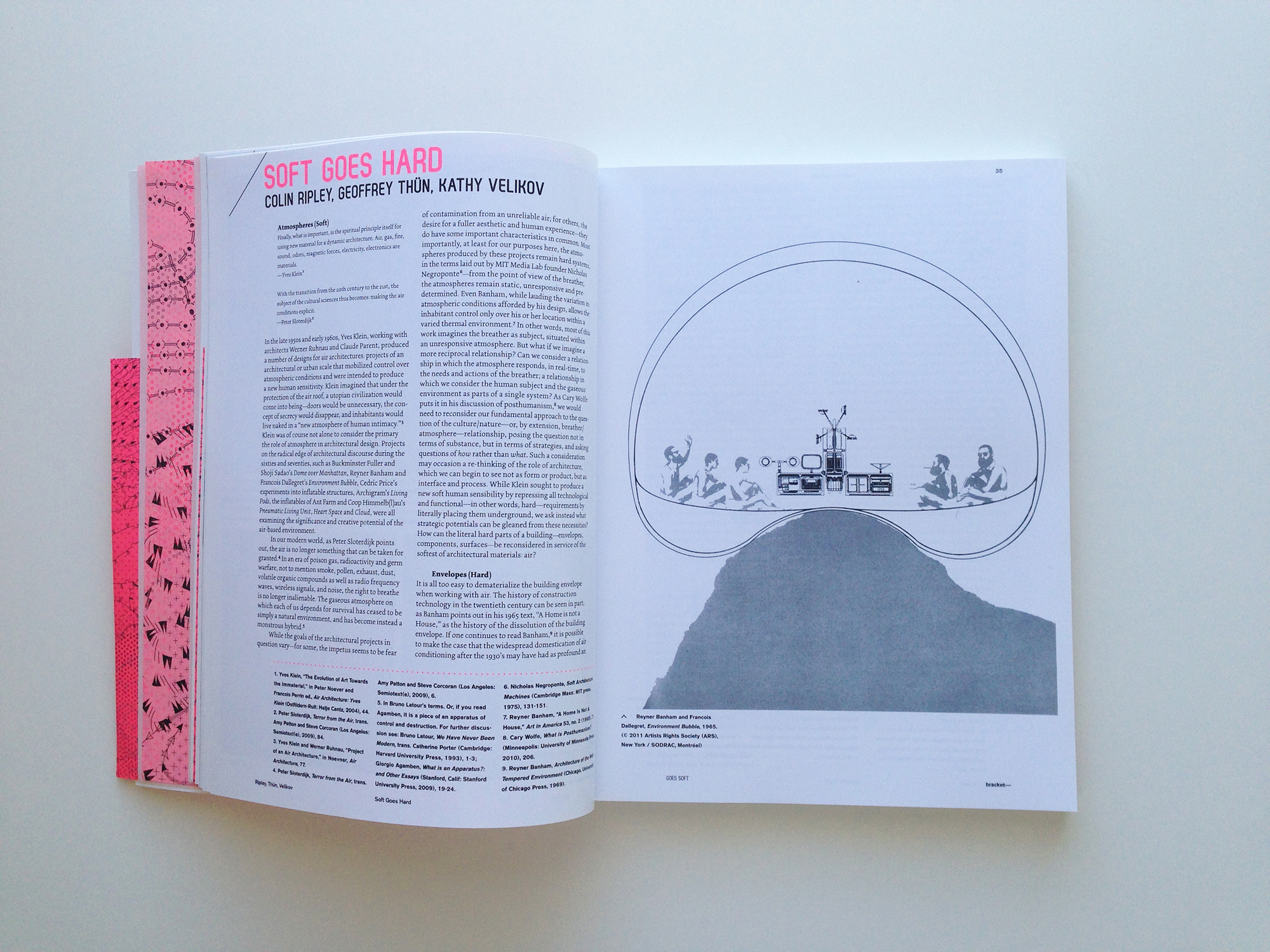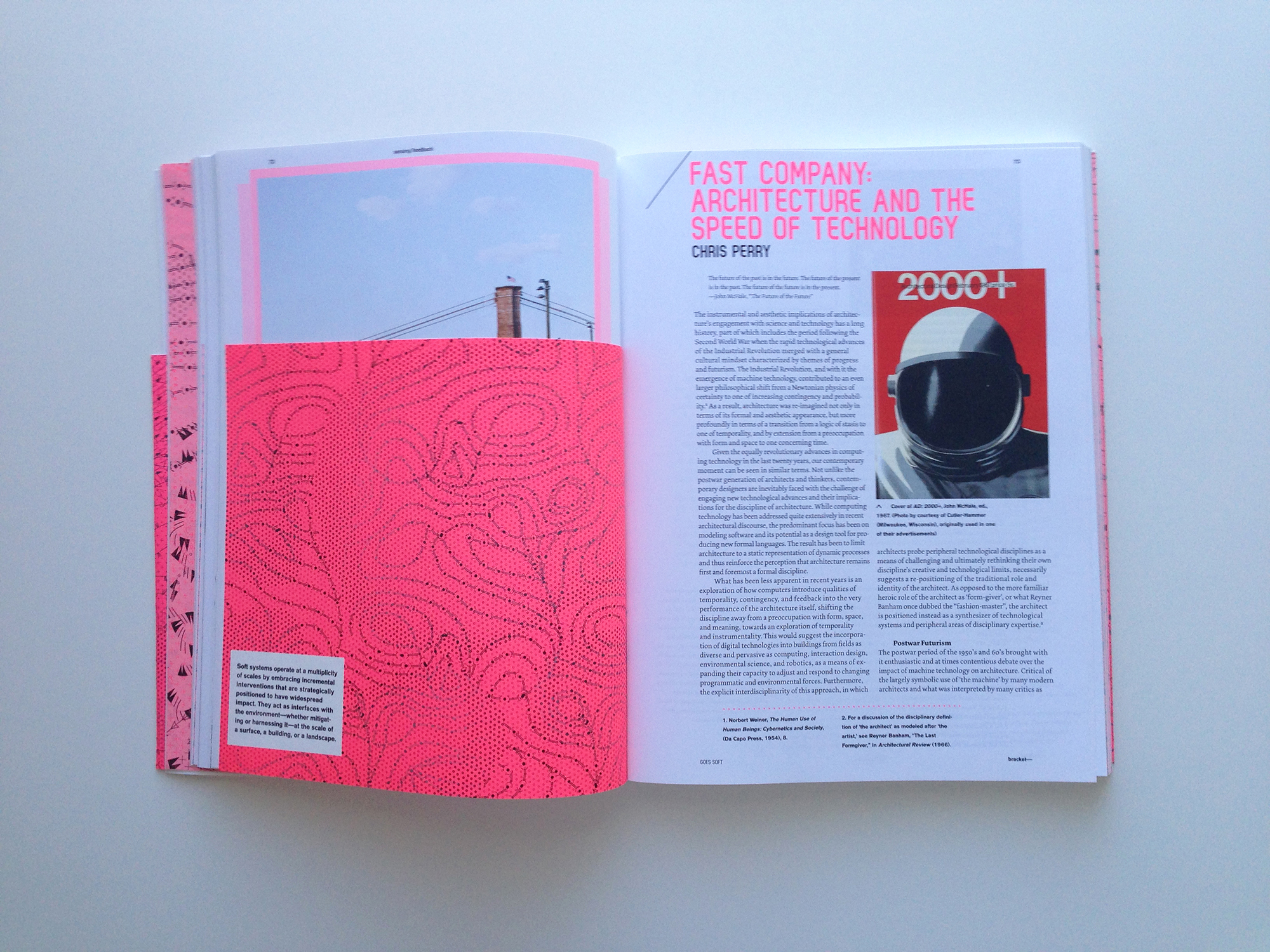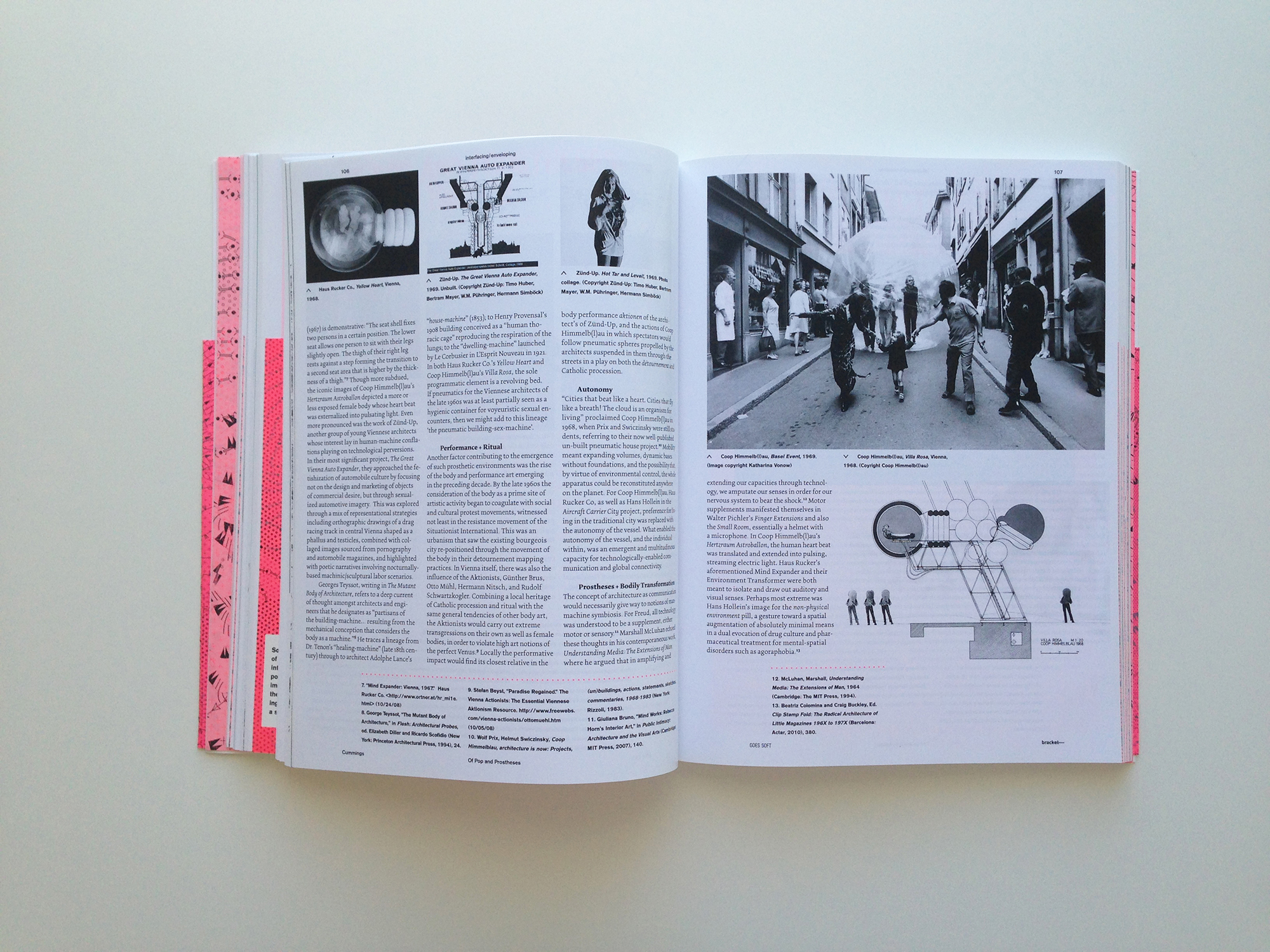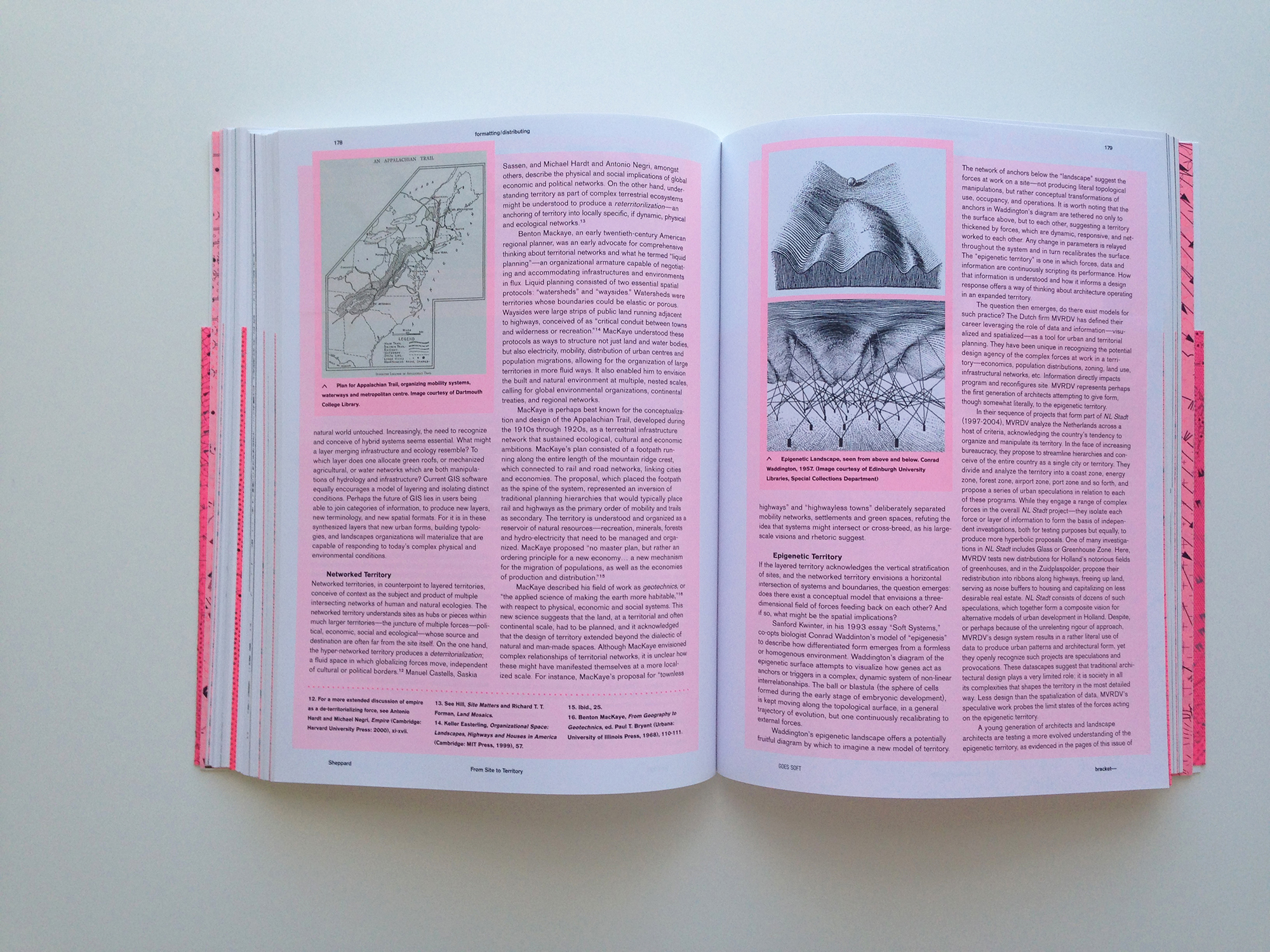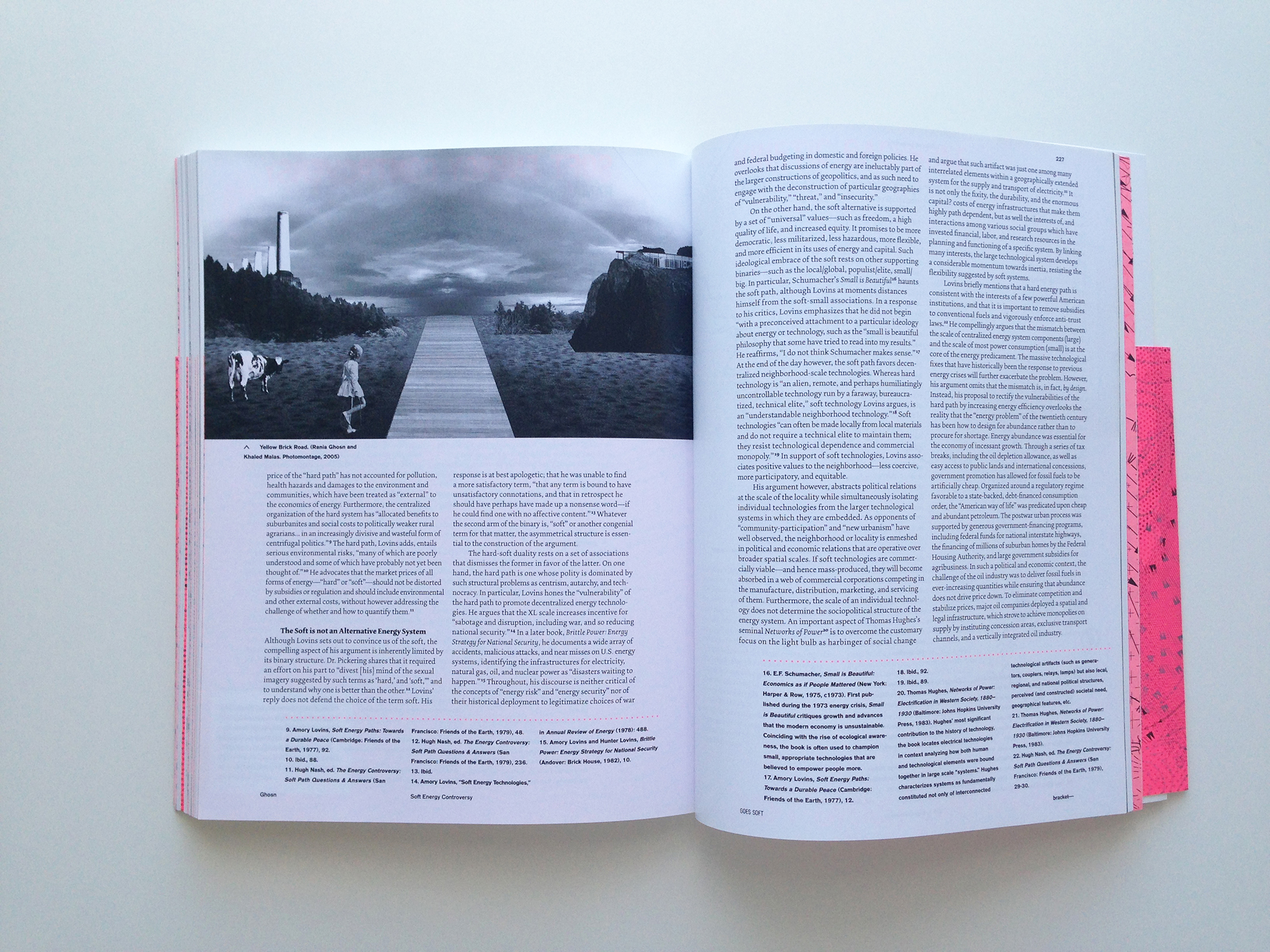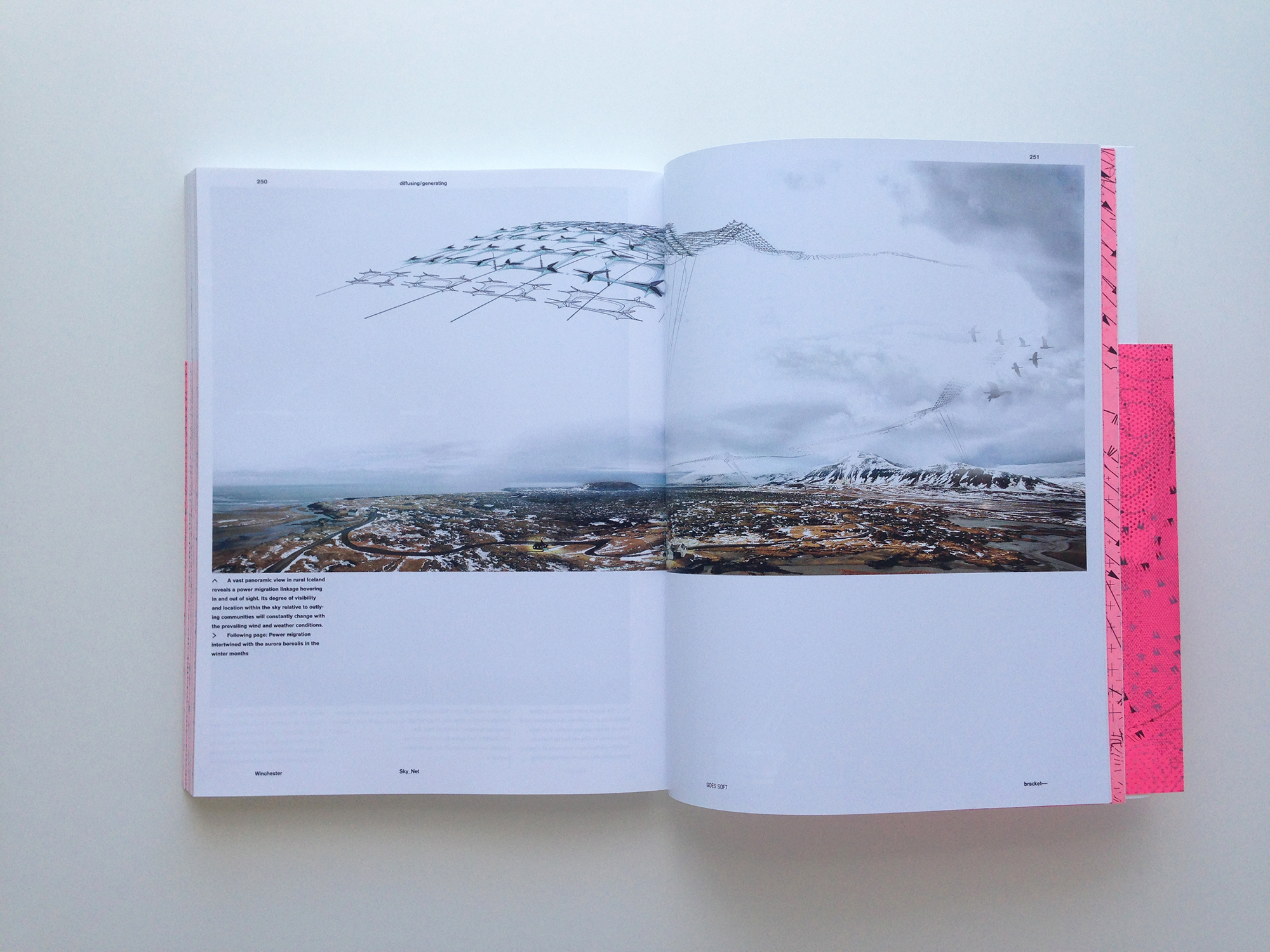Bracket [goes Soft] examines the use and implications of soft today – from the scale of material innovation to territorial networks. While the projects in Bracket 2 are diverse in deployment and issues they engage, they share several key characteristics — proposing systems, networks and technologies that are responsive, adaptable, scalable, non-linear, and multivalent. Certain projects reveal how soft systems rely on engagement with their larger environment, collecting and sensing environmental atmospheric information, and through feedback, adapting the system to augment performance. Other projects examine how soft systems can function as interfaces with the environment – whether mitigating or harnessing it – operating at the scale of a wall, a building, or a landscape. Moreover, a particular strand of projects presented in Bracket 2 are tactical and strategic in nature, enabling them to operate, often covertly, within existing organizational structures, subverting rules and limitations for opportunism, to support new ecologies – whether natural, economic or political. Intelligence in other work lies in the organization and format of the system, accommodating transformation by rejigging components of the system itself. Adapting to extrinsic as well as intrinsic factors, enabling them to anticipate, recover and transform in unexpected situations, renders other speculations resilient to disturbances. Instead of mitigation, contingency in these soft systems is typically opportunistic. Lastly, select projects expose how the networking of smaller units or interventions, diffused across a larger territory, can generate, collect, or respond at a vast scale. Agile, these tentacular networks can diffuse or retract as resources or needs change.
